
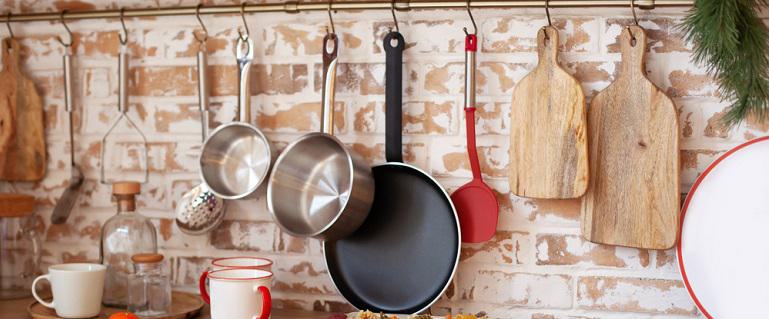

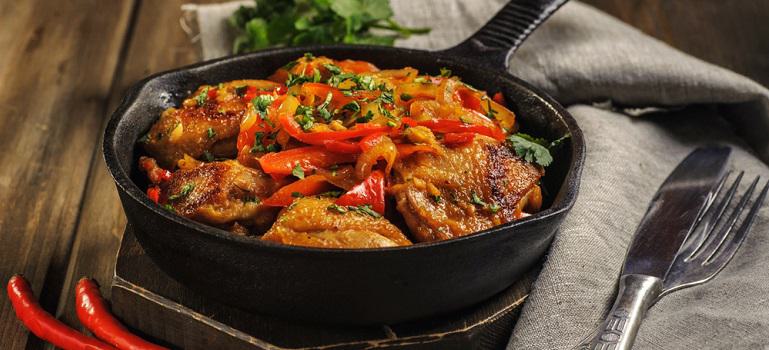 Cast iron is one of the most rigid cooking materials around. Virtually indestructible cast iron pots and pans have been used in the kitchen for decades. Though cast iron is a poor conductor of heat, its self-regulating, slow to heat up (and cool down) nature makes it ideal for fry pans, griddles and dutch ovens. A porous material, when properly cared for, cast iron can help deliver an excellent flavor and texture to your meals.
For a delicious recipe that you can cook in your newly purchased cast iron cookware set, try out this Gluten Free Cast Iron Skillet Cornbread.
Cast iron is one of the most rigid cooking materials around. Virtually indestructible cast iron pots and pans have been used in the kitchen for decades. Though cast iron is a poor conductor of heat, its self-regulating, slow to heat up (and cool down) nature makes it ideal for fry pans, griddles and dutch ovens. A porous material, when properly cared for, cast iron can help deliver an excellent flavor and texture to your meals.
For a delicious recipe that you can cook in your newly purchased cast iron cookware set, try out this Gluten Free Cast Iron Skillet Cornbread.
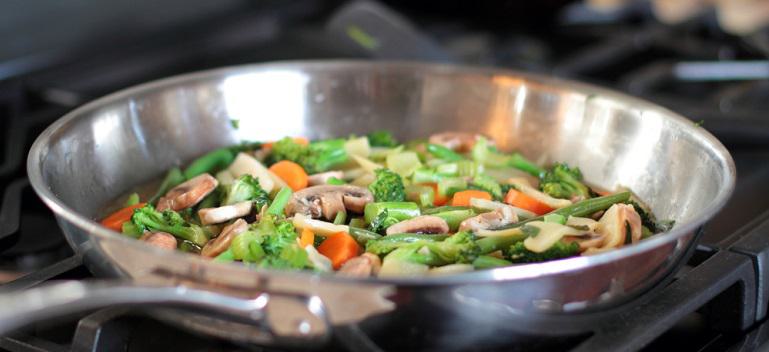 Stainless steel is a highly popular cookware material and is found in kitchens worldwide. When purchasing a stainless steel pan, you'll want to check that it is of good quality. Quality stainless steel cookware will not only produce better results but will also last much longer.
By itself, stainless steel is a slightly poor conductor of heat. Luckily, a process was developed to bond stainless steel to more heat-conductive materials like aluminum and copper to increase its cooking abilities. The result of this process is now known as stainless steel "clad" pots and pansan excellent choice to add to your cookware collection.
Searching for a delicious recipe to cook in your stainless steel pan? Make this Sweet Potato Gnocchi with Sage Pesto.
Stainless steel is a highly popular cookware material and is found in kitchens worldwide. When purchasing a stainless steel pan, you'll want to check that it is of good quality. Quality stainless steel cookware will not only produce better results but will also last much longer.
By itself, stainless steel is a slightly poor conductor of heat. Luckily, a process was developed to bond stainless steel to more heat-conductive materials like aluminum and copper to increase its cooking abilities. The result of this process is now known as stainless steel "clad" pots and pansan excellent choice to add to your cookware collection.
Searching for a delicious recipe to cook in your stainless steel pan? Make this Sweet Potato Gnocchi with Sage Pesto.
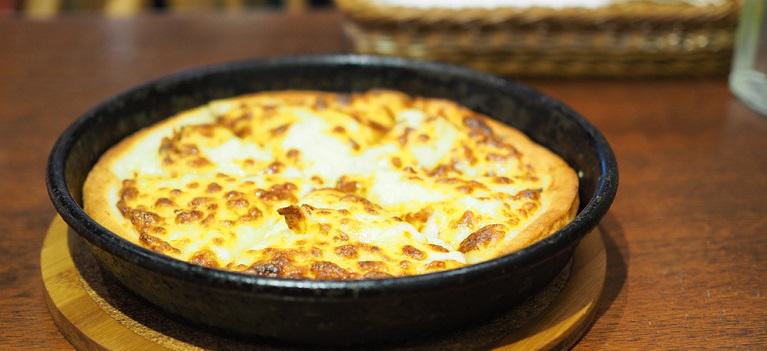 Carbon steel is incredibly durable and one of the most inexpensive pans materials you can purchase. Made mostly of iron and some carbon, when the seasoning coating is applied correctly, this cookware develops a naturally nonstick interior that does not rust easily. When not made of iron, raw carbon steel is regulated and only used to create specialty pans like skillets and woks. Many cooks find carbon steel pans to be highly versatile and almost as durable as cast iron.
For a recipe worthy of your carbon steel pan, make this mouthwatering Pesto Shakshuka.
Carbon steel is incredibly durable and one of the most inexpensive pans materials you can purchase. Made mostly of iron and some carbon, when the seasoning coating is applied correctly, this cookware develops a naturally nonstick interior that does not rust easily. When not made of iron, raw carbon steel is regulated and only used to create specialty pans like skillets and woks. Many cooks find carbon steel pans to be highly versatile and almost as durable as cast iron.
For a recipe worthy of your carbon steel pan, make this mouthwatering Pesto Shakshuka.
 Copper conducts heat exceptionally well. While its excellent heat retention properties allow it to cook food evenly and quickly, many chefs believe it is not an ideal cooking material for everyday cooking.
Have a copper pan that youd like to test out? Start by making this Savory Spring Porridge.
Copper conducts heat exceptionally well. While its excellent heat retention properties allow it to cook food evenly and quickly, many chefs believe it is not an ideal cooking material for everyday cooking.
Have a copper pan that youd like to test out? Start by making this Savory Spring Porridge.
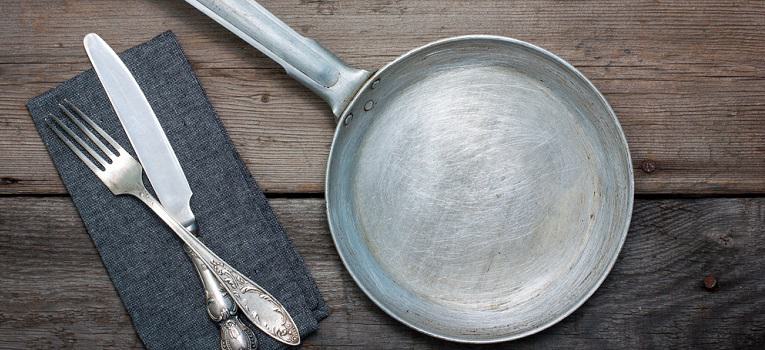 When searching for aluminum cookware options, there are two types that you'll commonly find: regular aluminum and anodized aluminum. Pure aluminum boasts heat conductivity abilities similar to copper and because it's more affordable, it's often the preferred choice. Light and responsive, it's a practical selection when purchasing larger cookware like roasting pans and griddles.
For a recipe that can feed the entire family, use your aluminum cookware to make this Fireside Paella.
When searching for aluminum cookware options, there are two types that you'll commonly find: regular aluminum and anodized aluminum. Pure aluminum boasts heat conductivity abilities similar to copper and because it's more affordable, it's often the preferred choice. Light and responsive, it's a practical selection when purchasing larger cookware like roasting pans and griddles.
For a recipe that can feed the entire family, use your aluminum cookware to make this Fireside Paella.
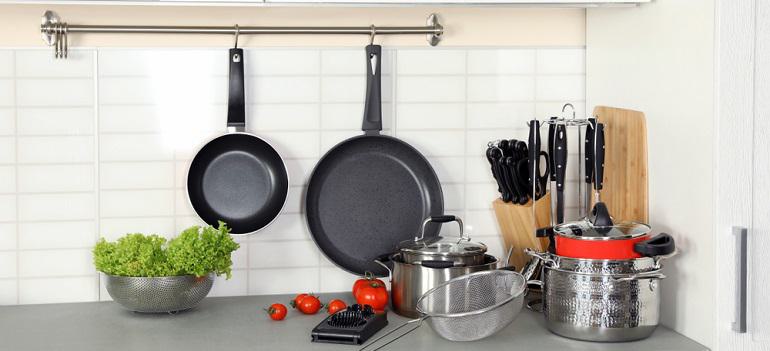 Nonstick pans are one of the most commonly used cooking items. A go-to cooking material, there are several benefits of nonstick pans. Not only are nonstick pans more manageable to clean than other cooking materials, but they also require less oil which leads to healthier cooking practices. This being so, nonstick cookware does have its disadvantages and the impact of the chemicals used in the nonstick coating has been under debate recently.
For the ideal nonstick recipe, whip up this Squash and Barley Mushroom Risotto.
Nonstick pans are one of the most commonly used cooking items. A go-to cooking material, there are several benefits of nonstick pans. Not only are nonstick pans more manageable to clean than other cooking materials, but they also require less oil which leads to healthier cooking practices. This being so, nonstick cookware does have its disadvantages and the impact of the chemicals used in the nonstick coating has been under debate recently.
For the ideal nonstick recipe, whip up this Squash and Barley Mushroom Risotto.